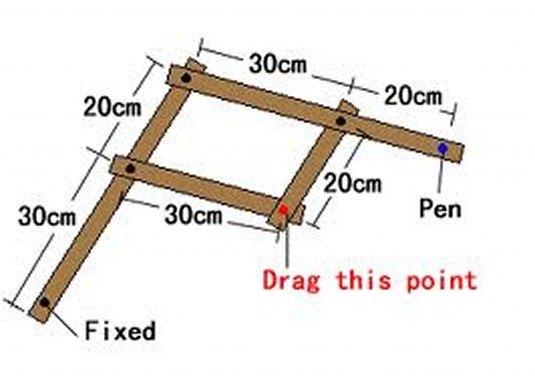A pantograph (from Greek roots παντ- ‘all, every’ and γραφ- ‘to write’, from their original use for copying writing) is a mechanical linkage connected in a manner based on parallelograms so that the movement of one pen, in tracing an image, produces identical movements in a second pen. If a line drawing is traced by the first point, an identical, enlarged, or miniaturized copy will be drawn by a pen fixed to the other.
Image and text courtesy of Wikipedia.

